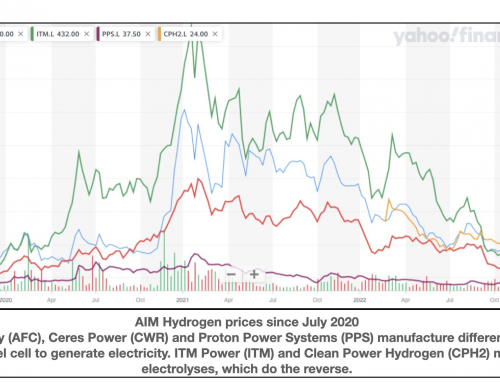By Julian Singer
In July 2022 the UK government published its Jet Zero strategy with a goal that at least 10 per cent of UK aviation fuel should be sustainable aviation fuel (SAF) by 2030 with at least five commercial-scale SAF plants in construction by 2025. In October 2022 the Department for Transport commissioned an independent study to understand better the conditions needed to develop an SAF industry in the country and the barriers to overcome.
The report was written by Philip New, who had been CEO of BP Alternative Energy ten years ago and more recently CEO of the Energy Systems Catapult after consulting with stakeholders and relevant experts.
Sustainable aviation fuels can be divided into three technology generations. The first generation (1g) uses a process known as HEFA (Hydrogenated Esters and Fatty Acids) is made from vegetable oils and fats that are refined with hydrogen to remove the oxygen and other unwanted elements to produce hydrocarbons, which are then refined to produce the products wanted. It is a well-established process with Shell, Total and the Finnish company Nesle all building large plants in Europe.

Photo by Arno Senoner on Unsplash (www.unsplash.com)
HEFA originally depended on natural sources such as palm oil, but due to the environmental impact this is being stopped, so the process now depends on waste oils and fats in the UK, Europe and to some extent the US. The feedstock is not only limited in supply but is also used to produce bio-diesel and other products. The UK is not a large player in this market, so for these reasons and since the process anyway only achieves 70 per cent de-carbonisation at best the industry is looking at second and third generation techniques.
SAF 2g is produced from carbon-containing biomass or municipal wastes by a reducing them to syngas, which is then upgraded to a fuel via catalysts, or by converting them to ethanol and then to SAF. These process achieves a minimum of 80 per cent decarbonisation but are not yet at a commercial scale. SAF 3g, also called e-fuels or PtL (Power to Liquid), do not yet exist but will be formed from green hydrogen and carbon captured directly from the air or by capture from an industrial plant.
There are of course other solutions to decarbonising aviation, such as by using hydrogen or batteries. The conclusions of this study, and of the government’s Jet Zero Strategy, are that these are unlikely to have a major impact before 15 to 20 years, if then, hence the need to introduce SAF now. Different countries have different goals, with the UK’s higher than the EU and also putting a limit on the proportion of 1g SAF. But how important is it to produce these fuels in the UK? Mr New concludes that competition between countries will be strong, so that the UK will not meet its goals unless it has its own production.
Furthermore, this production needs to be competitively priced. Aviation fuels are highly mobile: the cost of transporting them is less than 1 per cent of the total cost, while airlines can to some extent choose where they refuel. The US encourages SAF production by subsidising the development of supplies, while the UK and EU set targets for SAF inclusion with penalties for non-achievement. This means that US aviation fuel will likely be the cheapest, but on the other hand much of it will be 1g SAF derived from corn, which is considered non-sustainable and excluded in Europe.
Mr New concludes that the best bet for the UK is to become a leader in 2g technology where it already has a lead[1]. The main problem is how to attract investment in the sector beyond the government’s existing Advanced Fuels Fund. The aviation industry sees two key barriers: feedstock and revenue confidence.
The concern over feedstock is that there are many demands on Municipal Solid Waste that could affect adversely the cost and availability for SAF production unless protected. Imported feedstock is subject to varying definitions of what is sustainable.
For revenue confidence the industry would like something like the Contract for Difference mechanism used for renewable energy generators, which attracts investment by guaranteeing revenue for a long period. The problem is how to develop this quickly: for renewable generators it was introduced after several years of experience when costs had become clearer. Mr New says that the industry would like to set up something akin to the Low Carbon Contracts Company, but with the latter managed by industry rather than government.
Further work is clearly needed. As the report concludes, two of the main asks from industry are coordination across government departments and confidence that the government will stay the course. Those are indeed some asks.
[1] For example Velocys (Greenbarrel, Septmber 2021) has expertise in the catalysts, while Powerhouse Energy (Greenbarrel, July 2022) is an expert in producing syngas from municipal waste.





